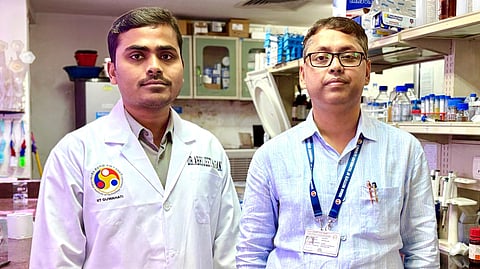Cyanobacteria offer IIT Guwahati a new pathway for tackling lead contamination
Indian Institute of Technology (IIT) Guwahati researchers have developed a laboratory-stage method that uses cyanobacteria to extract lead from contaminated water. The team reports that the approach may offer a low-cost, environmentally sustainable option for addressing one of the most persistent global pollutants.
The findings were published in the Journal of Hazardous Materials by Prof Debasish Das, Dept. of Bioscience and Bioengineering, his postdoctoral fellow Dr Abhijeet Mahana, and Prof Tapas K Mandal, Dept. of Chemical Engineering, IIT Guwahati.
Their work examines how specific components of a cyanobacterial species, Phormidium corium NRMC-50, can bind to lead in water under light-dependent conditions.
Lead exposure through water remains a critical health risk. The researchers note that the metal can persist for decades once it enters water sources through industrial discharge, agricultural runoff, or ageing pipelines. It has been associated with neurological, cardiovascular, kidney, and developmental problems, particularly among children.
In their study, the team evaluated different biological components of the cyanobacterium to determine which would be most effective in capturing lead. Exopolysaccharides (EPS) demonstrated the strongest performance, removing 92.5 percent of lead from contaminated samples.
Prof Das said the cyanobacterial biosorbents require minimal energy and can be scaled without complex infrastructure, adding that early estimates show treatment costs to be 40 to 60 percent lower than conventional methods while offering comparable or better removal efficiency.
He also noted that metals absorbed by microorganisms can later be recovered and converted into products such as biochar, bioplastics, or biofuels.
The researchers emphasise that cyanobacteria multiply naturally and require only sunlight, carbon dioxide, and limited nutrients, which may support broader use in ecological remediation. Their next step involves advancing the method from laboratory experiments to pilot-scale testing in real wastewater streams.
The research is currently at a laboratory stage, and findings require further validation before being ready for commercial application.



